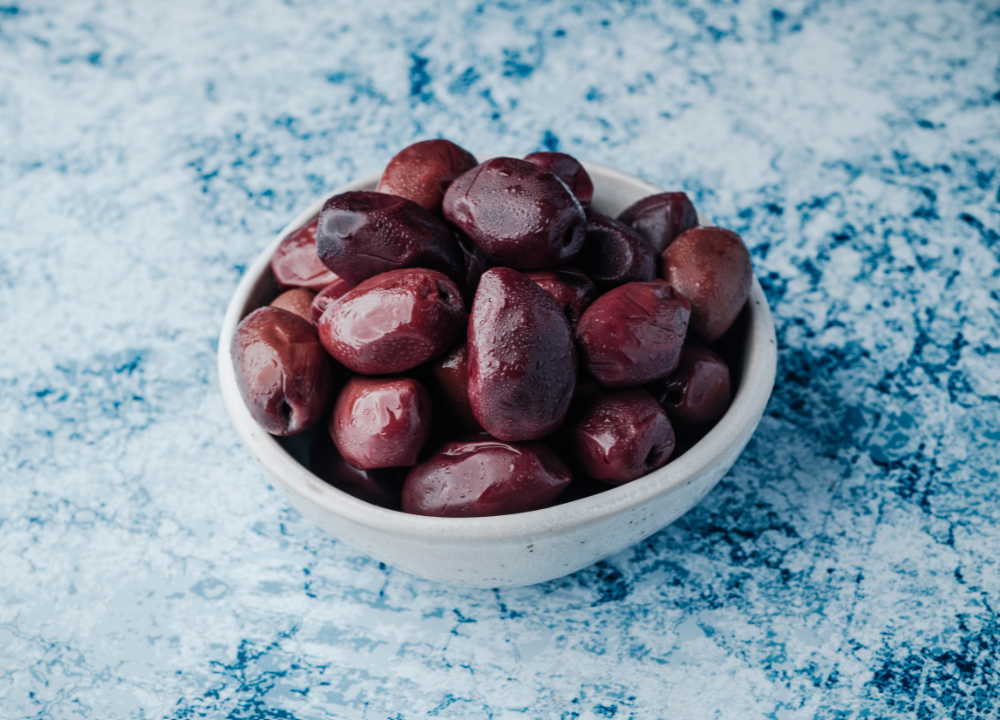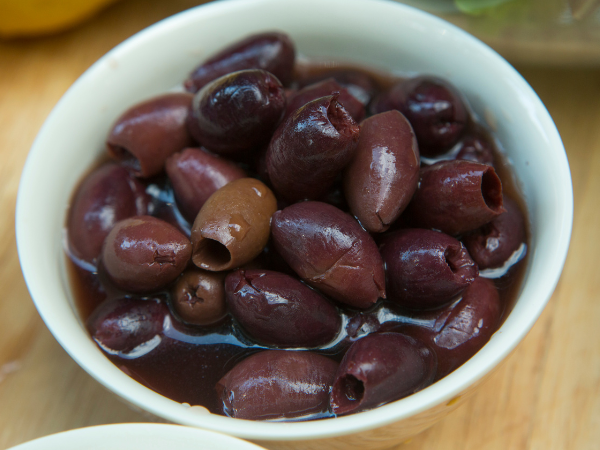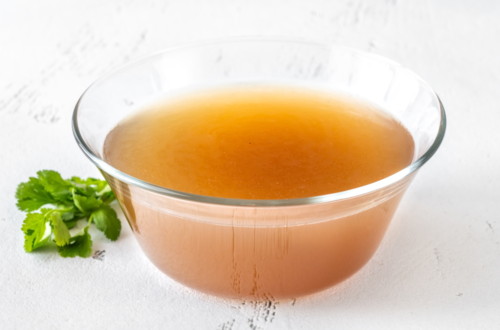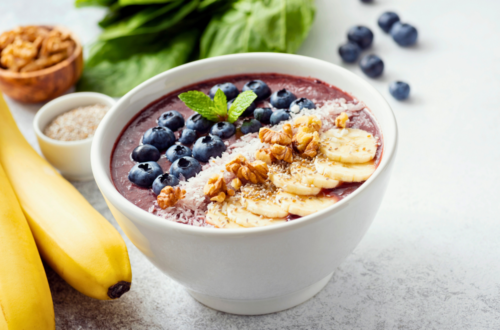
Kalamata Olives for Weight Loss: Nutritional Value and Benefits Explained
Kalamata olives can aid in weight loss due to their high fiber and healthy fat content. They are nutrient-dense and low in calories.
Kalamata olives are a popular Mediterranean staple known for their rich flavor and health benefits. These small, dark purple olives are packed with nutrients that support weight loss and overall health. They are high in healthy monounsaturated fats, which help reduce bad cholesterol levels.
Table of Contents
What Are Kalamata Olives?
Let’s delve into the nutritional value and benefits of these unique olives.
Origins And Characteristics Of Kalamata Olives
Kalamata olives hail from the beautiful region of Kalamata in Greece. They are distinct due to their almond shape and deep purple color. Farmers hand-pick these olives to ensure their quality and ripeness.
Here are some key characteristics of Kalamata olives:
- Almond shape
- Dark purple color
- Firm texture
- Rich, fruity flavor
The olives grow on trees called Olea europaea. These trees thrive in the warm, sunny climate of the Mediterranean. The unique environment contributes to the olives’ robust flavor and high nutritional value.
Farmers use traditional methods to cure Kalamata olives. This process involves soaking the olives in a brine solution for several months. The curing process enhances their taste and preserves their natural goodness.
Kalamata olives are rich in healthy fats, especially monounsaturated fats. These fats support heart health and help you feel full longer. The olives also contain antioxidants, which protect your body from damage caused by free radicals.
Nutritional Profile Of Kalamata Olives
Let’s explore the key aspects of their nutritional value and how they can benefit your health and weight management.
How Many Calories Are In Kalamata Olives?
Calories play a crucial role in weight management. Knowing the calorie content of Kalamata olives can help you stay within your daily caloric goals. A typical serving size of Kalamata olives is about 4-5 olives, which weighs approximately 15 grams. This serving contains:
- Calories: 35-45 calories
- Fat: 3-4 grams
- Carbohydrates: 1-2 grams
- Protein: 0.2 grams
Kalamata olives are relatively low in calories, making them a good snack option. Eating them in moderation can help you stay within your calorie limits while enjoying their rich flavor.
Vitamins And Minerals In Kalamata Olives
Kalamata olives are packed with essential vitamins and minerals that are important for overall health. Here are some key nutrients found in these olives:
- Vitamin E: Important for skin health and acts as an antioxidant.
- Iron: Essential for oxygen transport in the blood.
- Calcium: Necessary for strong bones and teeth.
- Copper: Plays a role in iron metabolism and cardiovascular health.
- Polyphenols: Antioxidants that protect cells from damage.
Including Kalamata olives in your diet can help you meet your daily requirements for these vitamins and minerals. This nutrient-rich food can support your overall health while aiding in weight loss.

Healthy Fats: The Role Of Oleic Acid In Weight Loss
Kalamata olives are a good source of healthy fats, particularly oleic acid. Oleic acid is a monounsaturated fat that offers several health benefits:
- Reduces inflammation: Oleic acid helps lower inflammation in the body.
- Improves heart health: It can reduce bad cholesterol levels.
- Supports weight loss: Monounsaturated fats can help control appetite and reduce cravings.
Here is a breakdown of the fat content in a 15-gram serving of Kalamata olives:
| Type of Fat | Amount per Serving |
|---|---|
| Total Fat | 3-4 grams |
| Monounsaturated Fat (Oleic Acid) | 2.7-3.5 grams |
| Saturated Fat | 0.3-0.5 grams |
Including healthy fats like oleic acid in your diet can aid in weight management by promoting satiety and reducing the overall calorie intake.
Are Kalamata Olives Good For Weight Loss?
One of the key questions people often ask is: Are Kalamata Olives Good for Weight Loss? The answer is a resounding yes! These olives are packed with nutrients that can aid in weight management.
Health Benefits Of Kalamata Olives In A Weight Loss Diet
Kalamata olives are rich in monounsaturated fats, which are known to promote heart health. These healthy fats can also assist in weight loss. Here are some key benefits:
- High in Fiber: Kalamata olives contain dietary fiber, which helps in maintaining a healthy digestive system.
- Rich in Antioxidants: The antioxidants in Kalamata olives can reduce inflammation and improve overall health.
- Vitamins and Minerals: These olives are a good source of vitamins A and E, as well as minerals like iron and calcium.
Including Kalamata olives in your diet can help you feel fuller longer, reducing the temptation to overeat.
How Kalamata Olives Help Control Appetite And Boost Metabolism
Controlling appetite and boosting metabolism are crucial for weight loss. Kalamata olives can play a significant role in both:
- Appetite Control: The fiber in Kalamata olives helps you feel full and satisfied, reducing the urge to snack between meals.
- Boosting Metabolism: Healthy fats in these olives can increase your metabolic rate, helping you burn more calories.
Here’s a simple breakdown of how Kalamata olives can help:
- They provide a sense of fullness due to their fiber content.
- Monounsaturated fats help in better nutrient absorption and energy utilization.
- Antioxidants improve cellular function and metabolism.
By incorporating Kalamata olives into your diet, you can support your weight loss journey effectively.
Low Glycemic Impact And Blood Sugar Control
Kalamata olives have a low glycemic index, making them ideal for blood sugar control. This is crucial for weight loss:
- Low Glycemic Index: Foods with a low glycemic index release sugar slowly into the bloodstream, preventing spikes in blood sugar levels.
- Blood Sugar Control: Stable blood sugar levels help in reducing cravings and maintaining energy levels.
Below is a simple comparison:
| Food | Glycemic Index |
|---|---|
| Kalamata Olives | 15 |
| White Bread | 70 |
Choosing low glycemic foods like Kalamata olives can help you manage your weight more effectively.
Are Kalamata Olives Keto-friendly?
The keto diet focuses on high-fat, low-carb foods. Kalamata olives fit perfectly into this diet:
- Low in Carbs: Kalamata olives contain only about 3g of carbs per 100g, making them ideal for a keto diet.
- High in Healthy Fats: The high monounsaturated fat content supports ketosis, a metabolic state where your body burns fat for fuel.
Here’s a quick look at their keto-friendly profile:
| Nutrient | Amount per 100g |
|---|---|
| Carbs | 3g |
| Fat | 15g |
Including Kalamata olives in your keto meal plan can enhance your diet’s effectiveness.

Kalamata Olives Vs. Other Olives For Weight Loss
This article explores how Kalamata olives compare to other olives in aiding weight loss.
Are Black Olives And Kalamata Olives The Same?
Black olives and Kalamata olives are not the same. They differ in flavor, nutritional value, and origin.
Black Olives:
- Grown in various regions
- Mild, slightly salty flavor
- Commonly used in pizzas and salads
Kalamata Olives:
- Originated from Kalamata, Greece
- Rich, fruity flavor
- Often used in Mediterranean dishes
Here is a table comparing their nutritional values:
| Nutrient | Black Olives (per 100g) | Kalamata Olives (per 100g) |
|---|---|---|
| Calories | 115 | 177 |
| Fat | 10g | 15g |
| Fiber | 2.2g | 3.7g |
Kalamata olives have more calories and fat but also more fiber. Both types offer health benefits but serve different culinary purposes.
Are Kalamata Olives Better For Weight Loss Than Other Olives?
Kalamata olives might be better for weight loss due to their higher fiber content.
Benefits of Kalamata olives for weight loss:
- High in fiber – Helps you feel full longer
- Rich in healthy fats – Supports overall health
- Contains antioxidants – Reduces inflammation
Here is a table comparing Kalamata olives to other common olives:
| Olive Type | Calories (per 100g) | Fiber (per 100g) |
|---|---|---|
| Green Olives | 145 | 3.3g |
| Black Olives | 115 | 2.2g |
| Kalamata Olives | 177 | 3.7g |
Kalamata olives have the highest fiber content, making them a good choice for weight loss. Their rich flavor also helps satisfy cravings, reducing the urge to snack on unhealthy foods.
How To Include Kalamata Olives In Your Weight Loss Plan
Here’s how you can effectively include Kalamata olives in your weight loss plan.
Portion Control Tips
Understanding how to control portions is crucial when adding Kalamata olives to your diet. These olives are high in calories, so eating them in moderation is key. Here are some tips to help you:
- Measure your servings: A typical serving size is about 5-10 olives, which equals 25-50 grams. Use a kitchen scale for accuracy.
- Use smaller containers: Place your olives in small bowls or containers to avoid overeating.
- Avoid snacking directly from the jar: This can lead to consuming more than intended. Always portion out your olives beforehand.
Here’s a quick reference table for calorie intake based on serving size:
| Serving Size (grams) | Calories |
|---|---|
| 25g | 35 |
| 50g | 70 |
Can You Cook Kalamata Olives? Creative Ways To Add Them To Meals
Yes, you can cook Kalamata olives, and they add a unique flavor to many dishes. Here are some creative ways to include them in your meals:
- Salads: Toss sliced Kalamata olives into your favorite salad for an extra burst of flavor.
- Pasta dishes: Add them to pasta sauces or sprinkle over pasta for a Mediterranean twist.
- Omelets: Mix chopped Kalamata olives into your morning omelet for a savory start to your day.
- Pizza: Use them as a topping on homemade pizza to enhance the taste.
- Roasted Vegetables: Roast vegetables with Kalamata olives for a delicious side dish.
Cooking with Kalamata olives is simple. Just chop or slice them and add them to your recipes. Their rich flavor complements many ingredients, making them versatile in the kitchen.
How Many Kalamata Olives Should You Eat For Weight Loss?
While Kalamata olives are healthy, consuming them in moderation is vital for weight loss. Here are some guidelines:
- Daily intake: Aim for 5-10 olives per day. This provides the benefits without excessive calorie intake.
- Balance with other foods: Pair olives with other low-calorie, nutrient-dense foods like vegetables and lean proteins.
- Track your intake: Keep a food diary to monitor how many olives you consume and adjust as needed.
Remember, even healthy foods can hinder weight loss if overconsumed. Stick to the recommended serving sizes to enjoy the benefits without compromising your weight loss goals.
Storing And Handling Kalamata Olives
Enjoy their benefits fully, proper storage and handling are crucial. Here’s how to keep your Kalamata olives fresh and flavorful.
How Long Are Kalamata Olives Good For After Opening?
Once you open a jar of Kalamata olives, they start to lose their freshness. To keep them at their best, follow these tips:
- Refrigerate: Always store opened olives in the fridge.
- Use a clean utensil: Avoid using fingers to take out olives. Use a clean fork or spoon.
- Keep them submerged: Ensure olives remain covered in their brine. This helps preserve their flavor and texture.
Opened Kalamata olives can last up to two weeks in the refrigerator. For the best taste, consume them within this period.
Do Kalamata Olives Expire? Understanding Their Shelf Life
Yes, Kalamata olives do expire. Here’s how you can understand their shelf life:
| Storage Condition | Shelf Life |
|---|---|
| Unopened, in a cool, dark place | 1-2 years |
| Opened, refrigerated in brine | 2 weeks |
Check the expiration date on the packaging for unopened olives. If your olives smell off or show signs of mold, discard them.
Can I Freeze Kalamata Olives? Best Practices For Storage
Yes, you can freeze Kalamata olives. Follow these best practices:
- Drain the brine: Remove olives from their liquid before freezing.
- Use airtight containers: Place olives in an airtight container or freezer bag.
- Label and date: Write the date on the container to keep track.
Frozen Kalamata olives can last up to six months. Thaw them in the refrigerator before use to maintain their texture and taste.
Potential Side Effects Of Kalamata Olives
While these olives can be a great addition to your diet, certain factors may pose health risks for some people.
High Sodium Content And Its Impact On Health
Kalamata olives contain a high amount of sodium, which can be concerning for some individuals. Excessive sodium intake can lead to several health issues. Here are some key points to consider:
- High Blood Pressure: Sodium can raise blood pressure, increasing the risk of heart disease.
- Kidney Damage: High sodium levels can strain kidneys, potentially leading to kidney disease.
- Water Retention: Excessive sodium can cause the body to retain water, leading to bloating and swelling.
It’s crucial to monitor sodium intake, especially if you have conditions like hypertension or kidney issues. The table below highlights the sodium content in Kalamata olives:
| Serving Size | Sodium Content |
|---|---|
| 5 Olives | 200 mg |
| 10 Olives | 400 mg |
Considering the daily recommended sodium intake is around 2,300 mg, eating large quantities of Kalamata olives can quickly add up.
Allergic Reactions And Sensitivities
Some individuals may experience allergic reactions or sensitivities to Kalamata olives. Common symptoms include:
- Skin Reactions: Itching, redness, or hives.
- Digestive Issues: Nausea, vomiting, or stomach cramps.
- Respiratory Problems: Difficulty breathing or wheezing.
If you experience any of these symptoms after consuming Kalamata olives, it’s essential to seek medical advice. Allergic reactions can vary in severity, and in rare cases, they can be life-threatening. People with known allergies to olives or olive oil should avoid consuming these olives.
Can Kalamata Olives Cause Diarrhea?
While Kalamata olives are generally safe to eat, they can cause digestive issues in some people. This includes diarrhea, which can occur for several reasons:
- High Fat Content: Olives are rich in healthy fats, which can be difficult for some people to digest.
- Sodium Levels: High sodium intake can cause dehydration, leading to diarrhea.
- Fiber Content: The fiber in olives can cause digestive upset if consumed in large quantities.
To avoid digestive issues, it’s best to consume Kalamata olives in moderation. If you experience persistent diarrhea after eating them, consult a healthcare provider.
Are Kalamata Olives Safe During Pregnancy?
Pregnant women need to be cautious about their diet, including the consumption of Kalamata olives. While these olives can provide essential nutrients, there are potential risks:
- High Sodium Content: Excessive sodium can lead to high blood pressure, which is dangerous during pregnancy.
- Potential Contaminants: Olives can sometimes be contaminated with harmful bacteria or chemicals.
- Allergic Reactions: Pregnant women may be more sensitive to allergens, increasing the risk of allergic reactions.
It’s advisable for pregnant women to consume Kalamata olives in moderation and ensure they are from a reputable source. Consulting a healthcare provider before adding them to the diet is also a good practice.




